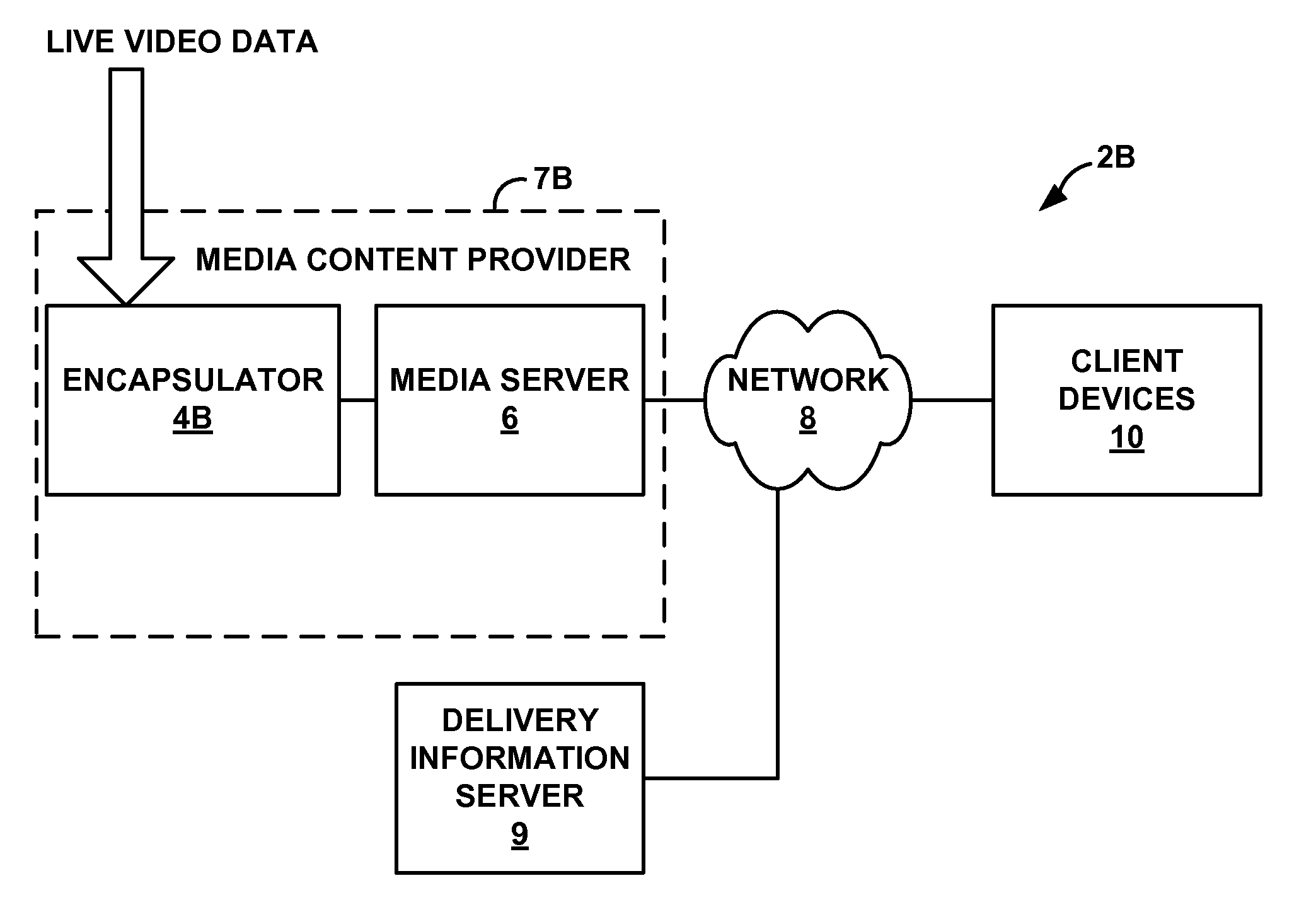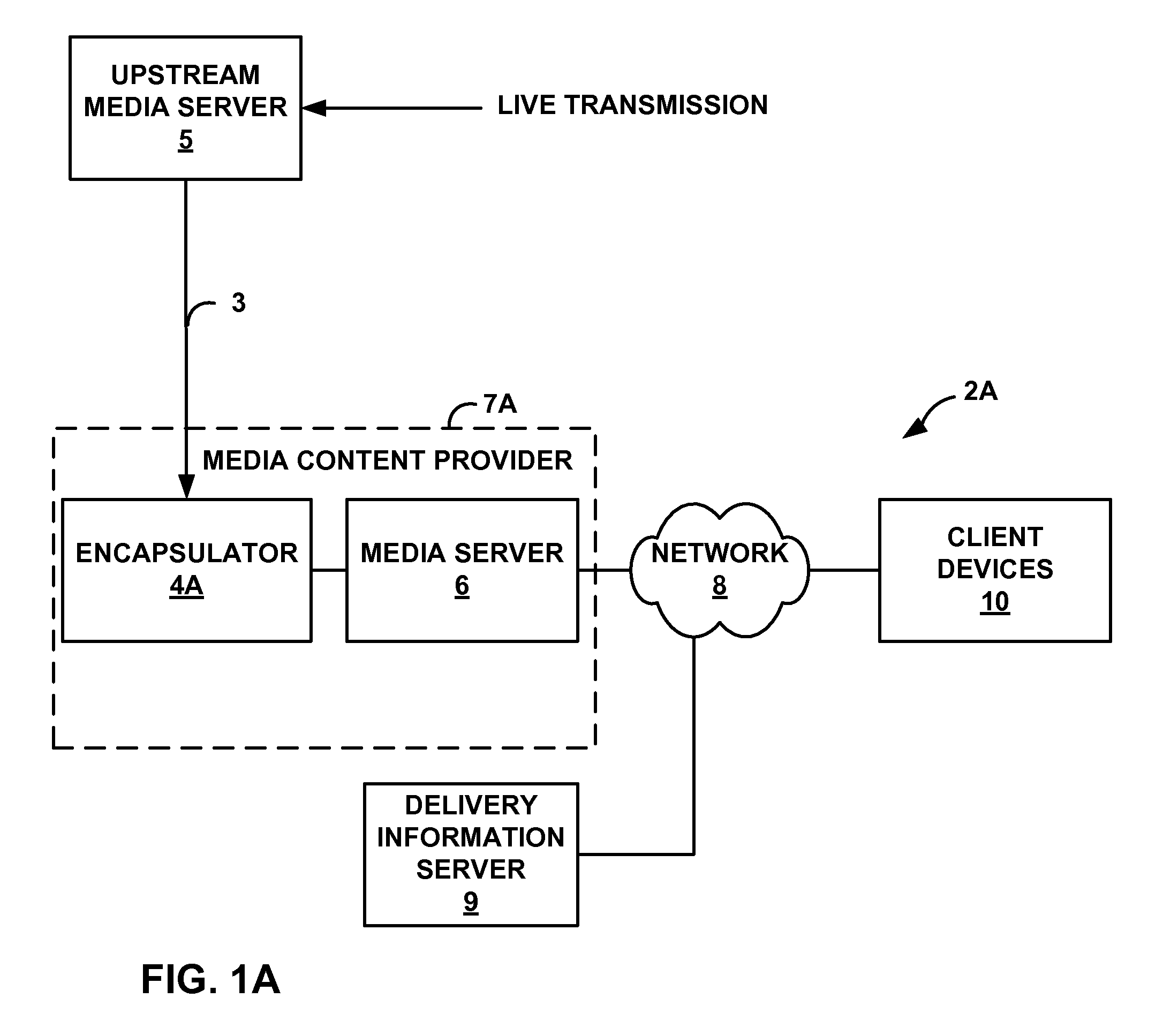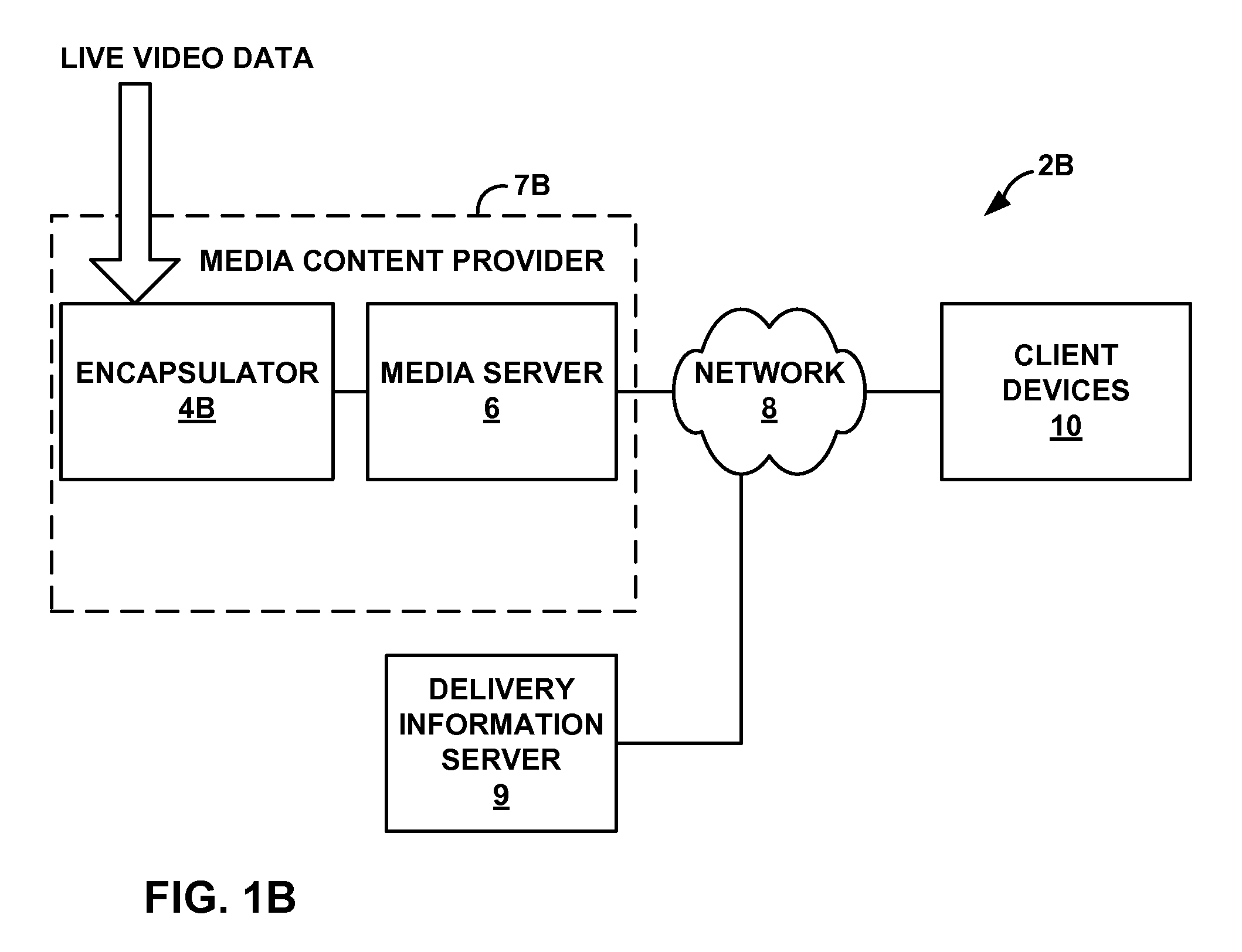Live media delivery over a packet-based computer network
a computer network and live media technology, applied in the field of computer networks, can solve the problems of affecting the viewing experience, and affecting the user's viewing experience, so as to reduce the rebuffering delay
- Summary
- Abstract
- Description
- Claims
- Application Information
AI Technical Summary
Benefits of technology
Problems solved by technology
Method used
Image
Examples
Embodiment Construction
[0031]FIG. 1A is a block diagram illustrating an exemplary system 2A for downloading a live transmission of an event. System 2A includes upstream media server 5, media content provider 7A, network 8, delivery information server 9, and client devices 10. In some embodiments, upstream media server 5 receives raw (i.e., unencoded) video and audio data of the live transmission. In this case, upstream media server 5 may be geographically proximate to the event that is being transmitted live. Upstream media server 5 may encode the live transmission and generate a packetized stream 3. Upstream media server 5 may encode the live transmission using various techniques well known in the art. For example, the packetized stream may be a plurality of frames. The frames may be intra (I) frames, predictive (P) frames, or bi-directional (B) frames. I frames are frames that are encoded without reference to any other frames and may provide an entirely encoded picture. P frames and B frames are encoded...
PUM
 Login to View More
Login to View More Abstract
Description
Claims
Application Information
 Login to View More
Login to View More - R&D
- Intellectual Property
- Life Sciences
- Materials
- Tech Scout
- Unparalleled Data Quality
- Higher Quality Content
- 60% Fewer Hallucinations
Browse by: Latest US Patents, China's latest patents, Technical Efficacy Thesaurus, Application Domain, Technology Topic, Popular Technical Reports.
© 2025 PatSnap. All rights reserved.Legal|Privacy policy|Modern Slavery Act Transparency Statement|Sitemap|About US| Contact US: help@patsnap.com



